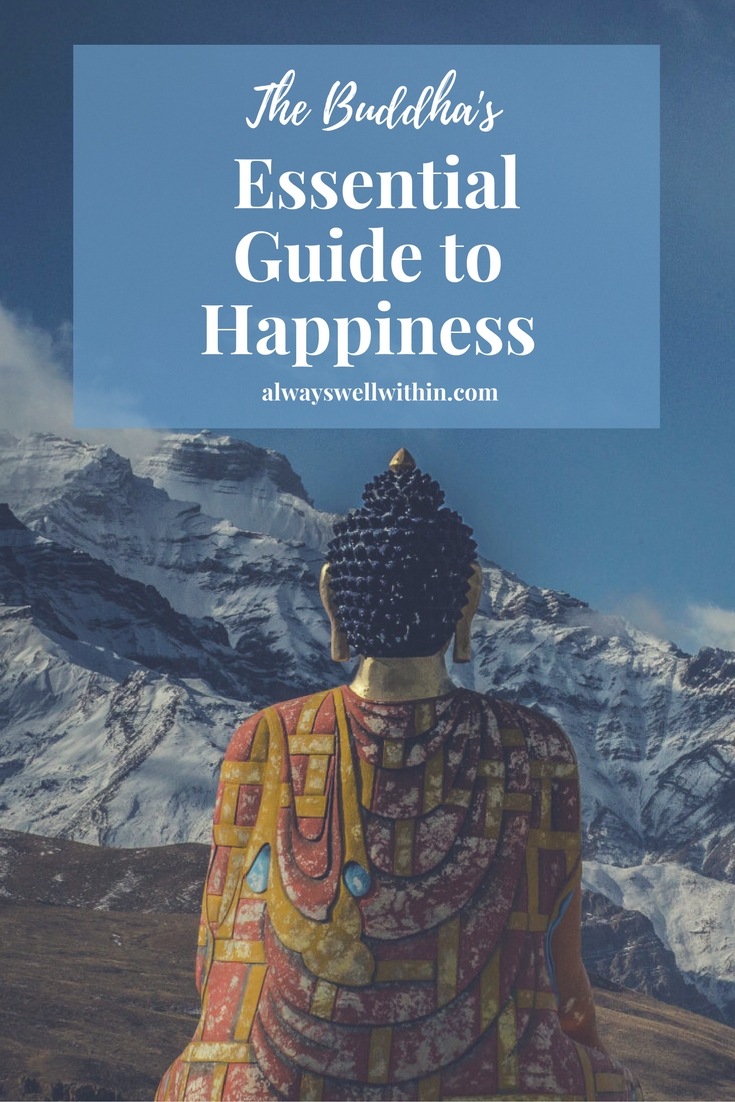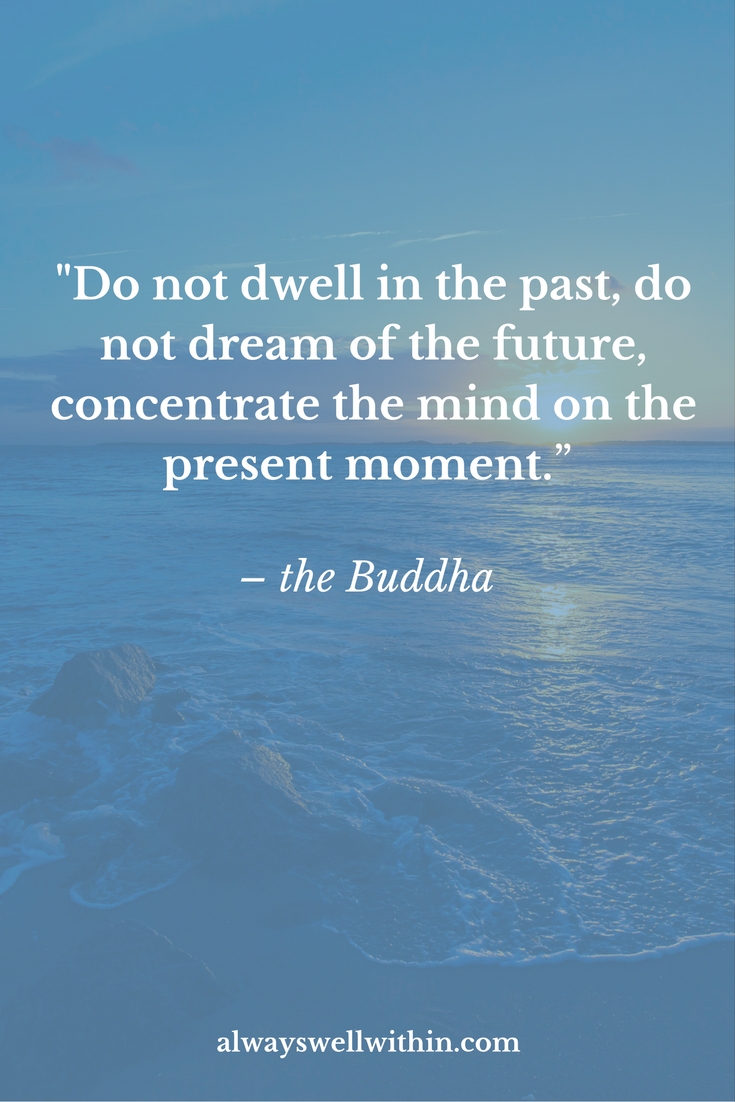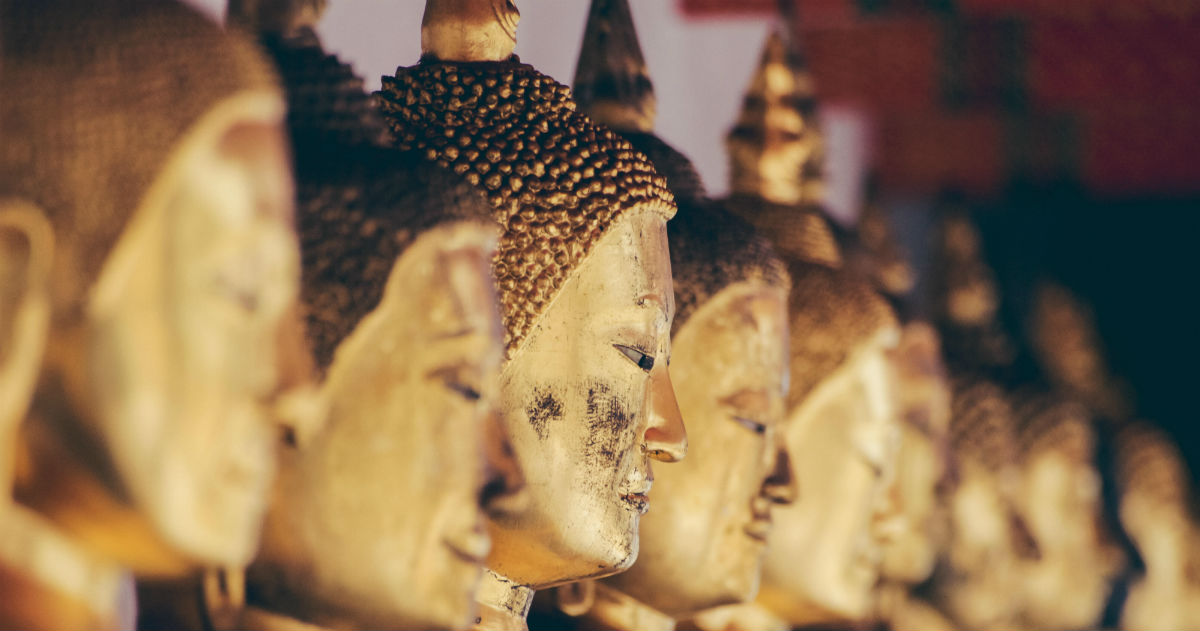 When people say “Buddha” or “the Buddha,” they usually mean Shakyamuni Buddha, Gautama Siddhartha, who lived during the 6th century B.C., and taught the spiritual path now called “Buddhism.”
When people say “Buddha” or “the Buddha,” they usually mean Shakyamuni Buddha, Gautama Siddhartha, who lived during the 6th century B.C., and taught the spiritual path now called “Buddhism.”
You don’t have to become a Buddhist, however, to benefit from the essential teachings of the Buddha because they are universal in nature. Moreover, they remain highly relevant to successfully navigating modern life and finding the deeper sense of happiness and contentment you so deserve.
The Buddha didn’t fabricate Buddhism. Compelled by his wish to understand suffering, he simply observed the way the mind works and how the world functions. He then shared his observations with others who also sought freedom from constant frustration. The Buddha’s observations therefore are meant to apply to everyone and everything, not just Buddhists or Asian reality.
Eventually, the Buddha’s teachings were codified into a system, actually three different systems called “vehicles.” And these three systems have evolved as they moved through different cultures including India, Tibet, Southeast Asia, Japan, China, and now the multi-cultured West.
Interestingly, “Buddhists” (at least in Tibet) never called themselves “Buddhists.” They referred to themselves as "nangpa” or “insiders,” meaning someone who seeks the truth within, in the nature of mind, as well as by observing the nature of reality.
Additionally, the Buddha encouraged his followers to carefully examine his teachings and only accept them when they rang true, rather than following his guidance out of blind faith. In one of his most famous statements, he said.
O bhikshus and wise men, Just as a goldsmith would test his gold By burning, cutting and rubbing it, So you must examine my words and accept them, But not merely out of reverence for me.
The word “Buddha” also contains a deeper meaning that goes beyond the name of a particular person. “Buddha” refers to anyone who has awakened from ignorance, realized his or her full wisdom potential, and as a result has brought an end to suffering and frustration.
So what’s this about “ignorance” and “wisdom?” We’ll get into that in a while, but it’s not as abstract as it may initially sound.
Before all this, every buddha started out just like you or me: human, fallible, and confused. Somehow, as they tripped about their life, they had the good fortune to encounter a teacher and the essence of the teachings as set forth by a buddha. Not necessarily Shakyamuni Buddha, as plenty of other buddhas have manifested as well. This auspicious encounter set them on the path to genuine, lasting happiness.
Let’s look at the heart of the Buddha’s teachings and how they can make a difference in your life.
The Essence of the Buddha’s Teachings
The Buddha gave 84,000 teachings to help people attain true peace and lasting happiness. However, when asked, the Buddha summarized all of his teachings, and indeed the teachings of all buddhas in these 4 short lines:
Commit not a single unwholesome action, Cultivate a wealth of virtue, To tame this mind of ours, This is the teaching of all the buddhas.
The first line means to do no harm, which is the cause of suffering for ourselves and others.
The second line means to cultivate positive actions, which are the cause of happiness for ourselves and others. Love and compassion are essential elements of the Buddha's teachings, and an inseparable aspect of the essence of mind. The are both a way to move toward your true self and a naturally manifestation of it.
The third line highlights how the mind - meaning how you perceive, which is under your control - is the creator of suffering and happiness. You can only be free of suffering and find lasting happiness, if you work with your own mind and transform negative thoughts, emotions, habits, and stories. At the same time, you need to be aligned with reality as it is. If you're not, it just brings suffering.
Initially, these 4 lines might sound moralistic, impossible, or like an impediment to your freedom to act out however you wish.
The Buddha, however, didn’t intend for his teachings to be used in a moralistic way to judge yourself or others. So don’t adopt his advice in a rigid way without infusing it with love, compassion, and a sprinkle of humor. Start slowly, do the best, you can, and always try to be gentle with yourself when you trip up.
Afterall, it’s impossible to immediately do no harm. Your brain has been intricately wired to act from the conditioned habits you embraced as a child. These are usually rooted in unconscious emotions like fear, anger, and self-doubt. These patterned responses likely protected you in important ways as a child, but now they block you from living fully as an adult, and probably make your life, or at least some parts of it, miserable.
Also, as the Buddha suggested, reflect deeply on these lines for yourself.
- Does acting negatively bring you happiness? Think about it on the short run and the long run.
- How does it feel when people act negatively toward you? Does it bring you happiness or suffering?
- Does acting positively bring you happiness?
- How does it feel when people act positively toward you? Does it bring you happiness?
- Is the mind the creator of suffering and happiness?
This isn’t meant to gloss over injustice, travesties, or cruelty. You can know right from wrong and call it out without being judgmental or acting negatively from anger yourself.
How to Tame Your Mind and See Clearly
Now let’s look more closely at the meaning of the 4th line, which some teachers say embodies all the teachings of the Buddha itself.
We’ll start by look at mindfulness, which is the foundational method for taming the mind. Then we'll move onto the nature of reality. Big stuff, isn't it! But it can make all the difference between whether you're happy or whether you suffer.
What Is Mindfulness and Why Is It Essential to Happiness?
The capacity to be mindful exists within all human beings, not just Buddhists. And it's essential if you want to get out of suffering.
Do not dwell in the past, do not dream of the future, concentrate the mind on the present moment. – Buddha

Taming the mind means to train the mind to think and act in peaceful, compassionate, and wise ways. It doesn’t mean suppressing emotions, but it also doesn’t encourage indulging them.
This is where mindfulness comes into play. In Tibetan Buddhism, mindfulness is called peacefully remaining or calm abiding. In short, it means to be aware in the present moment. And, the quality of that awareness is simultaneously alert and relaxed. Here’s a fuller definition from the Buddhist teacher, Tsoknyi Rinpoche:
The term mindfulness is often considered a translation of the Tibetan term drenpa, 'to become aware of an object, a condition, or a situation.' More precisely, drenpa is the aspect of consciousness that draws attention to an object.
That includes awareness of the thoughts and emotions that run through your mind. By practicing mindfulness, you gradually develop the capacity to intercede between stimulus and response, avert negative tendencies, and cultivate positive ones instead.
Mindfulness is the first stage of meditation, not the final one. Through allowing the mind to settle during the practice of mindfulness, you're able to observe two aspects of mind: the essence of mind, the pure quality of awareness, and the projections of mind, all the thoughts, emotions, and sensations.
The essence of mind is more than just awareness alone, as it experiences directly without the separation between observed and observed. This is why it’s called “pure” awareness or “pure consciousness,” among other names. To be able to remain in pure awareness is an advanced practice. In the beginning, the aim is mindfulness — moment by moment.
If you look at your own mind, you can see how sometimes you’re completely blended with your thoughts and emotions. You're overcome by anger, jealousy, or anxiety, for example. But other times, you're able to observe your thoughts and emotions and even make alternate choices.
Mindfulness allows the mind to slow down so you can make better choices in how you think and feel, which leads to greater happiness and harmony. Additionally, it creates the space in which you can gradually come to realize the essence of mind instead of being lost in the turmoil of thoughts and emotions. The essence of mind is beyond dualistic observation, but when you can be aware of the awareness, the mind looking at itself, you’re getting closer.
So mindfulness is the foundation and the first step to happiness.
The Connection Between Happiness and How the World Works
Understanding how the mind actually works will take you far. But to complete the picture, you need to see and align with the true nature of reality as well. You could say, this is another aspect of taming or transforming the mind.
This is when Buddhism calls in words like “ignorance” and “wisdom.” What do they really mean?
Ignorance means not understanding the way the mind or reality truly works; whereas wisdom is the opposite.
Wisdom means both understanding how reality works and living from pure awareness rather than conceptual thoughts and emotional turbulence.
So how does reality actually work?
The Buddha observed a few fundamental trends in the way reality works, including: impermanence, emptiness, interdependence, and karma. When you embrace each one of these universal laws wholeheartedly, you live in alignment with how reality functions rather than opposing it and as a result, creating suffering for yourself.
Impermanence: A Reminder of the Fragility of Life
Let’s start with impermanence. The Buddha said:
This existence of ours is as transient as autumn clouds. To watch the birth and death of beings is like looking at the movement of a dance. A lifetime is like a flash of lightening in the sky. Rushing by, like a torrent down a steep mountain.
Impermanence may seem obvious, but as Sogyal Rinpoche points out in this passage, how often do you take it to heart and allow it to influence your life?
Have you actually understood, and realized, the truth of impermanence? Have you so integrated it with your every thought, breath, and movement that your life has been transformed? Ask yourself these two questions: Do I remember at every moment that I am dying, and everyone and everything else is, and so treat all beings at all times with compassion? Has my understanding of death and impermanence become so keen and so urgent that I am devoting every second to the pursuit of enlightenment? If you can answer ‘yes’ to both of these then you have really understood impermanence.
According to the Buddhist approach, impermanence isn’t just something you think about when you see a car crash or a friend dies unexpectedly. It’s something you contemplate each and every day as a reminder to use every moment of your life as kindly and as prudently as possible.
Did You Say "Emptiness?" What Does It Mean?
The word emptiness can sound kind of scary. Does it mean disappearing into nothingness? No! "Emptiness" is actually a bad translation for the true meaning behind the original word, which provides the ground for everything to appear and eventually dissolve. You could call it infinite possibility or infinite potential. This is a concise explanation of emptiness from Sogyal Rinpoche.
Nothing has any inherent existence of its own when you really look at it, and this absence of independent existence is what we call “emptiness.” Think of a tree. When you think of a tree, you tend to think of a distinctly defined object; and on a certain level… it is. But when you look more closely at the tree, you will see that ultimately it has no independent existence. When you contemplate it, you will find that it dissolves into an extremely subtle net of relationships that stretches across the universe. The rain that falls on its leaves, the winds that sway it, the soil that nourishes and sustains it, all the seasons and the weather, moonlight and starlight and sunlight—all form part of this tree. As you being to think about the tree more and more, you will discover that everything in the universe helps make the tree what it is; that it cannot at any moment be isolated from everything else; and that at every moment, its nature is subtly changing. This is what we mean, when we say things are empty, that they have no independent existence.
Emptiness doesn’t mean that things don’t exist. They just don’t exist in the way that we generally relate to them - as solid, impermanent, and unchanging. In addition, they arise as the result of causes and conditions.
Think of a seed. It needs to be planted, whether by a human or the winds, and then it needs water, sunlight, rain, and so on to grow - the causes and conditions. And the seed itself only exists due to its mother plant, which also came about due to various causes and conditions.
At the level of mind, emptiness refers to the open quality of mind that is inseparable from awareness, but not clouded by conceptual thought; the type of mind we cultivate in meditation.
The Universal Law of Karma: Goodness Pays Off
Because everything arises due to causes and conditions, everything is interdependent as well. Nothing can exist on its own, can it? Can you think of anything that can exist on its own?
It’s the same with the choices you make every day. Your choices set in motion causes and conditions, which have consequences. Your every thought, word, and deed has a result — for better or for worse.
This is the law of “karma.”
Karma isn’t about fate or destiny. It’s about the choices you’ve made in the past and the ones you make right now. Although it may not always be clear in a linear way, according to the Buddha, positive thoughts, words, and actions bring about positive consequences and lead you toward greater happiness. Whereas, negative ones always bring you down eventually.
Sometimes this effect can be seen immediately. For example, when you speak harshly to someone, it rarely makes for good relations, does it? But sometimes karma doesn't ripen until much later. Although you can observe this law in action to a certain extent, there's also an element of faith or inner certainty with this one.
Understanding karma leads us to personal responsibility. While it may sometimes be enticing to think you're a victim of circumstances, everything comes about due to seeds planted in the past. If you want to be happy, the best thing you can do is to choose positive actions. And this is far easier from a state of calm abiding and clear seeing.
The Buddha's Essential Guide to Happiness
I know there’s so much to absorb in this post. Entire books have been written about emptiness and people meditate on the idea for years to fully realize it. Don’t expect to get all this in a flash.

But you don’t have to understand it all to put the Buddha's principle points into action. I’ve condensed all this into what you could call an essential guide to happiness.
If you want to be happy, follow these steps as prescribed by the Buddha:
- Avoid harming others.
- Be kind, compassionate, and loving. Learn the practice of loving-kindness and how to see everyone as another you.
- Practice mindfulness to calm your mind and increase awareness of your patterns of unhelpful and unhappy behaviors - the ones that cause you unhappiness.
- Practice positive alternatives to unhealthy and unhappy behaviors
- Understand that you are not your thoughts and emotions, and begin to identify with the awareness of mind instead. Let the thoughts and emotions float by.
- Remember impermanence daily. Make each moment count.
- Recall the “empty” quality of existence, as much as possible. And as a result, don't take the material world or everyday experiences too seriously.
- Respect interdependence and grow your storehouse of good karma by establishing a positive intention for each new effort and engaging in positive actions.
Your happiness depends on the choices you make in every moment. If you don’t make the connection between your choices and their result, it’s easy to repeat the same self-defeating patterns over and over again. Once you make the connection, you might still be drawn into unhelpful patterns for a time, due to the strength of habit, but gradually this will change as you choose new behaviors and thus create new grooves in your brain and greater resonance in your heart.
Ultimately, the Buddha's teachings are about creating happiness for yourself and others. By using the steps in this essential guide to happiness, you can defeat unhappy patterns, awaken to your true self, and find greater satisfaction, meaning, and joy in your life.
What especially struck you in these teachings from the Buddha? I would love to hear.
Sources:
- Oral teachings from Sogyal Rinpoche and other contemporary Buddhist masters.
- The Tibetan Book of Living and Dying by Sogyal Rinpoche.
- The Joy of Living, Unlocking the Secret and Science of Happiness by Mingyur Rinpoche.
- Open Mind, Open Heart, Awakening the Power of Essence Love by Tsoknyi Rinpoche
Thank you for your presence, I know your time is precious! Don’t forget to sign up for my e-letter and get access to all the free self-development resources (e-books, mini-guides + worksheets) in the Always Well Within Library. May you be happy, well, and safe – always. With love, Sandra

